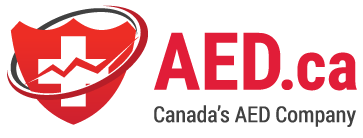Fort Myers News-Press
The Super Bowl is Sunday when the Philadelphia Eagles take on the Kansas City Chiefs in Arizona. It's the last game of the 2022 season, a season which almost saw a player from the Buffalo Bills die on the field from a sudden cardiac arrest.
The player, Damar Hamlin, made a tackle in Buffalo's game against the Cincinnati Bengals on Jan. 2. He stood up for a split second and then fell backward on to the field. Medical experts attended to him as players and fans watched. The game was delayed and then postponed, but it wasn't continued or made up because of NFL scheduling challenges for the playoffs.

One reason cited for Hamlin being alive today is an Automated External Defibrillator (AED) was used to get his heart started again. According to the American Heart Association, "these little boxes can save lives. But few people use them."
The devices are located in public places like offices, schools, shopping malls, grocery stores, and airports. Anyone can and should use one if necessary. It's that easy. Simply put, you don't need to be a medical expert or technician to use one.

In order to alleviate any fears people in Southwest Florida might have when it comes to using an AED, we asked the following questions to Lee Health's Chief Medical Officer Dr Iahn Gonsenhausen, an expert on AEDs:
What does an AED do?
An AED is a specialized piece of emergency response equipment that uses technology to evaluate if a patient’s heart is beating and if the electrical signals that control the heart beat are functioning correctly. If this evaluation determines that the electrical activity is abnormal, the AED is capable of generating an electrical shock to attempt to reset the heart’s electrical control system.
Do I need to have special training to use an AED?
No prior training is necessary to use an AED. They are designed to be used by individuals who do not have training. That being said, basic life support (BLS) training provided by the American Red Cross and American Heart Association can be beneficial for those who may be interested.
Is an AED difficult to use?
An AED is as easy to use as pressing the ‘ON’ button and listening to instructions. The instructions are simple: “Call for Help’ ‘Place pads on patient’ ‘Stand clear.’ In addition to verbal instructions, the AED is clearly labeled with labels and pictures to assist the user in following the directions.
Can I harm someone by using an AED?
AEDs are designed to only deliver an electrical shock if it is determined that the shock may help. While an AED will not save every patient every time it is used, correctly using an AED will not harm anyone.
What is the difference between sudden cardiac arrest (SAC) and a heart attack?
These terms may be used interchangeably quite frequently. They are actually both non-specific terms that cover a broad range of emergent or sudden heart problems. Cardiac arrest more specifically means that the heart is not effectively pumping blood. This can be caused by problems by a lack of coordinated rhythm of the heartbeat or if the heart stops beating entirely. A heart attack typically refers to a condition wherein the heart is not receiving enough oxygen (like if a coronary artery, the blood vessel that supplies blood to the heart itself, becomes blocked). In a heart attack, it is typical for the heart to continue beating, but suffer damage due to lack of blood supply and potentially then stop beating and go into ‘cardiac arrest.’

How much time do I have if someone experiences sudden cardiac arrest?
In healthcare, we say ‘time is muscle’ meaning the more time that goes by during an arrest, the more muscle damage is occurring and other organs, like the brain, can be injured as well. The faster the response, the better the chance of survival without significant injury. Ultimately, this varies based on the underlying condition of the person and the situation that they are in. A young and healthy individual can generally sustain a longer arrest and have fewer serious consequences, but there are many individual factors that can impact this so moving as quickly as possible is best.
Why isn't CPR good enough for sudden cardiac arrest?
High quality CPR is a life-saving intervention that should be started as soon as it is recognized that an individual doesn’t have a pulse. As good as CPR may be, nothing pumps blood better than an effectively beating heart. It’s what it’s made to do.
Can anyone buy an AED?
AEDs are not restricted medical devices and can be purchased from a variety of retailers. They are fairly expensive and do require ongoing maintenance.
Are there any tips, or advice, or other messages you want people know about AEDs?
If you find yourself in an emergency situation and are deploying an AED, be sure to begin CPR (straight arms locked at the elbows, use your bodyweight to depress the chest where you place your right hand during the Pledge of Allegiance and beat to the rhythm of the song “Stayin Alive.” Only stop when the machine tells you to stand clear and resume CPR immediately when it tells you. Continue CPR and following the AED directions until emergency personnel arrive and take over.


 Mark H. Bickel
Mark H. Bickel



